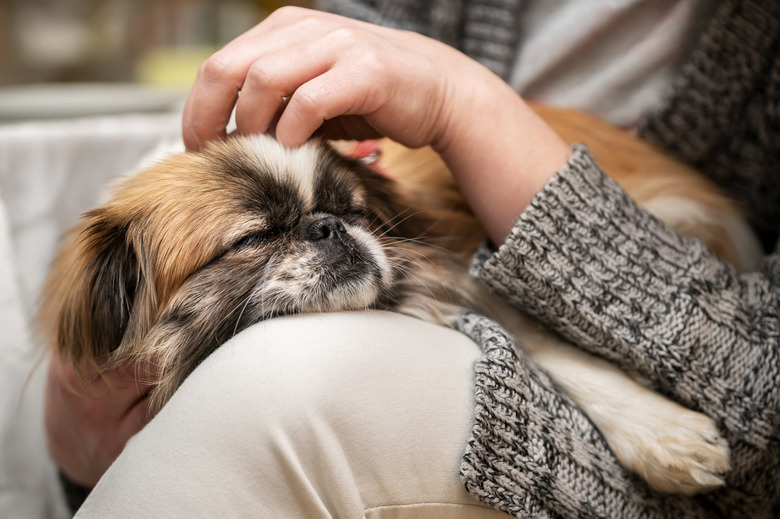How To Treat Dog's Foot Infection
Dog foot pads protect your pup as he accompanies you on walks and trips to the park, and injuries may occur from cuts and scrapes or chemical burns if your dog walks through a lawn or field that has recently been treated with fertilizers or herbicides. These injuries can become infected, so make sure you keep an eye on any injuries and see your veterinarian for dog paw infection treatment that may include wound care and medication.
Treat paw wounds
Treat paw wounds
Your dog may injure her feet at any time. During the summer months, she may scrape her paws on sharp rocks or cut herself on metal lawn edging or glass. In the winter, sharp ice or irritating sidewalk salt and chemical deicers can be problematic for your pup. Treating wounds on your dog's paws and nails right away is important to help prevent infection. If you see your dog limping or notice any blood, check the wound right away.
The first step is to stop any bleeding by applying pressure to the cut. You can gently clean and bandage the wound, but if there is debris in the cut that you can't get out or if the cut is deep enough to need stitches, you will want to see a veterinarian. A trip to the vet is also in order if the bleeding won't stop, the wound isn't healing, or you see any signs of an infected dog foot.
If your dog has an infected paw, you may see symptoms that include redness, swelling, and fever. You may also notice signs of pain, such as panting, refusing to put weight on the paw, and not allowing you to examine the foot.
Dog paw infection treatment
Dog paw infection treatment
Your dog may develop a bacterial infection on his paw from a wound or simply an overgrowth of bacteria that normally grow on the skin. These infections have a foul smell. Your veterinarian may take a sample from the infected area to identify the bacteria causing the infection.
The main treatment for this type of infection is antibiotics. Be sure to administer the antibiotics as directed by your vet and don't stop the treatment early, even if your pup seems to be feeling better, as the infection may return. If the infection is severe, your vet may also prescribe pain medication. It is important to prevent your dog from licking and chewing on the infected area. If necessary, you can put an Elizabethan collar on your dog until the infection heals.
Treat yeast infections
Treat yeast infections
Infected dog paws may also be caused by yeast infections. Yeast overgrowth is especially common if your dog has any inflammation in the paws, which can occur with allergies and other conditions. These infections have a foul, yeasty smell. You may also notice hair loss, and the space between the paws and toes may be moist. Your vet can confirm the diagnosis by examining a sample from the infected area.
Fortunately, these infections are easily treated with anti-fungal medication. You may administer this orally or apply it topically to the paws. Since these infections can be very itchy, your vet may also prescribe an anti-itch medication to make your dog more comfortable.
Other foot infections
Other foot infections
A dog may also have an infected paw cyst or abscess. There are several potential causes for these. An abscess is commonly caused by an ingrown hair between the toes that becomes infected. It can also develop if a foreign object, such as a grass seed, gets embedded in the paw. The swelling is very painful for your pup.
Your vet will diagnose the abscess with a physical exam and provide appropriate treatment. This may include removing the embedded object, antibiotics for a period of four to six weeks or more, anti-fungal medications, and pain relievers. You may need to soak your dog's paw in warm water and apply an antibiotic ointment to the infected area.
Cysts are pockets that are filled with fluid, and a similar condition is called comedones, which occurs when the hair follicles become clogged. Your vet may perform a biopsy to diagnose these conditions. Treatment typically includes laser therapy and antibiotics.
